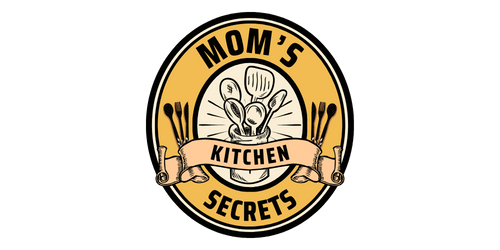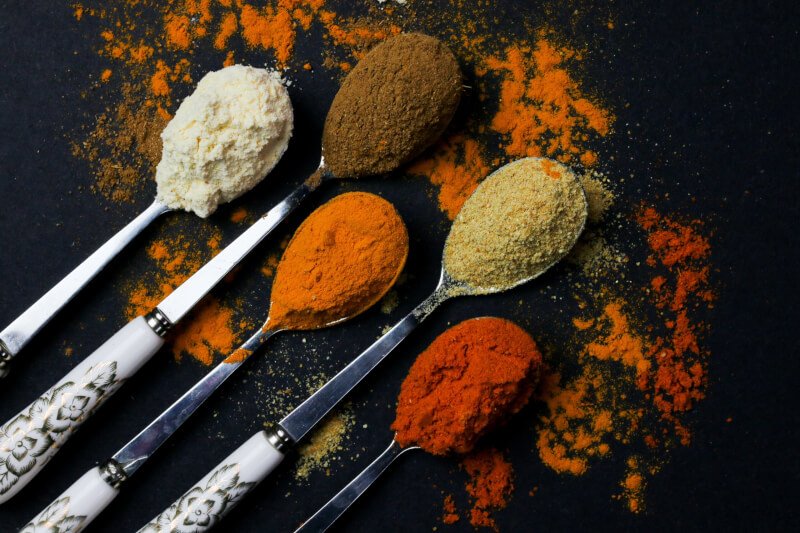In this article, you’ll discover the ultimate Beginner’s Guide to Using Spices and Herbs. Whether you’re a novice cook or an experienced chef looking to enhance your culinary skills, this guide will provide you with the necessary knowledge and tips to master the art of seasoning your dishes. From understanding the different flavor profiles of spices and herbs to learning how to properly incorporate them into your recipes, you’ll be well-equipped to elevate your cooking game. So, get ready to embark on a flavorful journey that will leave your taste buds dancing with delight.
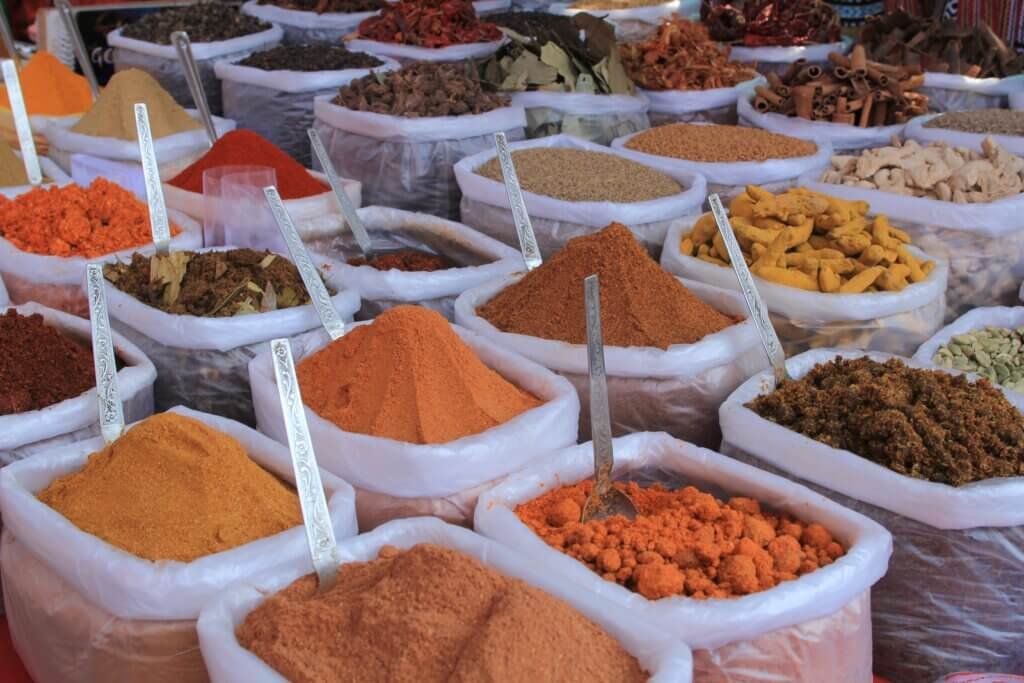
Introduction
Welcome to the beginner’s guide to using spices and herbs! If you’re someone who loves to experiment in the kitchen and wants to take your cooking to the next level, then you’ve come to the right place. Spices and herbs are an essential part of any chef’s arsenal, adding depth, flavor, and aroma to a wide range of dishes. In this comprehensive article, we will dive into the world of spices and herbs, exploring their differences, benefits, and how to best use and store them. So let’s get started and unlock the wonderful world of flavors that spices and herbs have to offer!
Understanding Spices and Herbs
What are Spices?
Spices are the dried seeds, fruits, roots, or bark of plants that are used to flavor food. They often come from tropical regions and are known for their powerful and intense flavors. Spices such as cinnamon, cumin, and paprika add warmth and depth to dishes, making them more vibrant and enticing.
What are Herbs?
On the other hand, herbs are the leaves of plants that are used for their aromatic properties. They are typically milder in flavor compared to spices and are commonly used in fresh or dried form. Herbs like basil, thyme, and rosemary bring freshness and brightness to dishes, elevating their overall taste profile.
Differences Between Spices and Herbs
While both spices and herbs add flavor to your dishes, they differ in various aspects. Spices are derived from different parts of plants and are usually more potent, giving a stronger taste. Herbs, on the other hand, come from the leaves of plants and offer a more subtle and nuanced flavor. Understanding the distinctions between spices and herbs will help you choose the right ingredients to enhance your culinary creations.
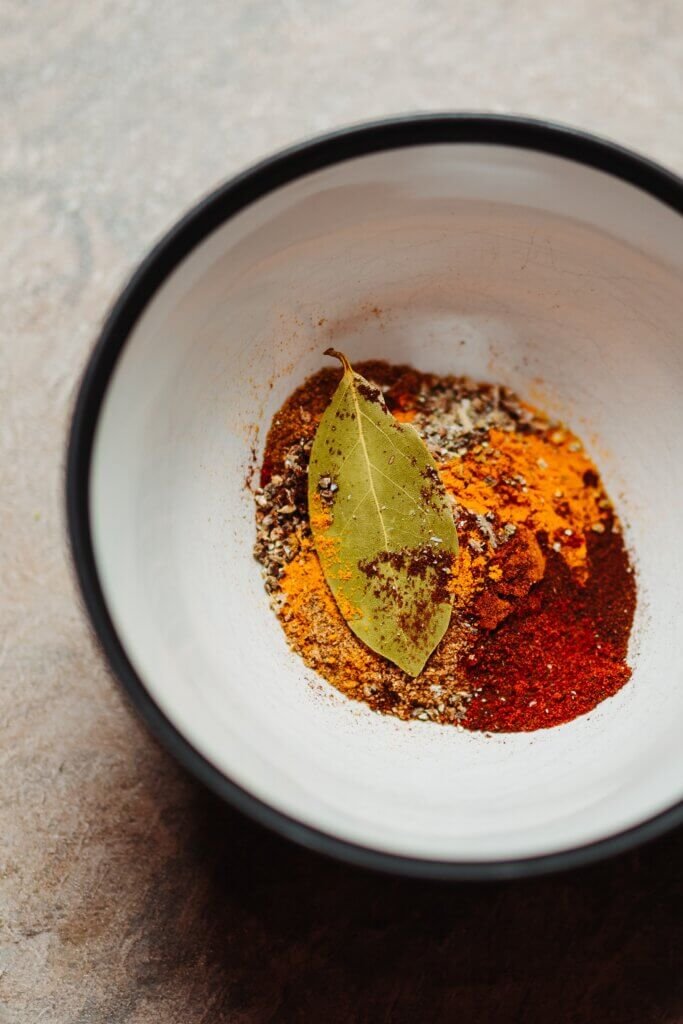
Benefits of Using Spices and Herbs
Enhanced Flavor
The primary reason for using spices and herbs in cooking is the enhanced flavor they bring to your dishes. Whether you’re looking to spice up a curry, add depth to a soup, or give a refreshing twist to a salad dressing, the right combination of spices and herbs can take your cooking to new heights.
Health Benefits
Apart from their flavor contribution, spices and herbs also offer numerous health benefits. Many of them contain antioxidants, vitamins, and minerals that can support overall well-being. For example, ginger and turmeric are known for their anti-inflammatory properties, while cinnamon can help regulate blood sugar levels. Incorporating spices and herbs into your meals not only makes them tastier but also adds a nutritious boost.
Cost-Effective
Using spices and herbs in your cooking is not only beneficial for your taste buds and health but also for your wallet. These flavor-packed ingredients can transform simple dishes into gourmet delights, allowing you to create impressive meals without breaking the bank. A little goes a long way, and by building a collection of staple spices and herbs, you’ll be able to experiment with a wide range of cuisines and dishes.
Common Spices and Herbs to Have in Your Pantry
Now that you understand the importance and benefits of using spices and herbs, let’s explore some must-have ingredients for your pantry. These versatile spices and herbs will provide a solid foundation for your culinary adventures.
Salt and Pepper
While not technically spices or herbs, salt and pepper are fundamental seasonings that no kitchen should be without. They enhance the natural flavors of your food, bringing out the best in every dish.
Basil
Basil is an aromatic herb with a sweet and slightly peppery flavor. It’s commonly used in Italian cuisine, adding a fresh and vibrant note to pasta dishes, salads, sauces, and even cocktails.
Oregano
Oregano is a Mediterranean herb known for its robust and earthy flavor. It is often used in Italian, Greek, and Mexican cuisines and pairs well with tomatoes, meat, seafood, and vegetables. Oregano is a key ingredient in classic Italian dishes such as pizza and pasta sauces.
Cinnamon
Cinnamon is a warm and aromatic spice commonly associated with sweet dishes like desserts and pastries. However, it also adds depth and complexity to savory recipes, such as curries, stews, and roasted meats. Its versatility makes it a staple in many kitchens around the world.
Cumin
Cumin is a spice with a distinct earthy and nutty flavor. It is widely used in Middle Eastern, Mexican, and Indian cuisines, adding a savory and smoky note to dishes. Cumin is a key ingredient in chili, falafel, curry powders, and spice blends like garam masala.
Paprika
Paprika is a vibrant spice made from ground dried peppers. It comes in various varieties, each with its own flavor profile, ranging from sweet and mild to hot and smoky. Paprika is commonly used in Hungarian, Spanish, and Eastern European cuisines, adding color and flavor to soups, stews, marinades, and rubs.
Thyme
Thyme is an herb with a subtle and slightly minty flavor. It pairs well with a wide range of ingredients and is often used in Mediterranean, French, and Caribbean cuisines. Thyme adds a refreshing touch to roasted meats, vegetables, soups, and sauces.
Rosemary
Rosemary is an aromatic herb with a robust and pine-like flavor. It is commonly used in Mediterranean and Italian cuisines, imparting a unique taste to roasted meats, potatoes, bread, and marinades. It also pairs well with citrus flavors, making it a versatile addition to your pantry.
Ginger
Ginger is a spicy and fragrant root that adds warmth and a hint of citrus to dishes. It is widely used in Asian cuisines, particularly in stir-fries, curries, and soups. Ginger is also known for its digestive properties and is often used in teas and remedies.
Turmeric
Turmeric is a vibrant and earthy spice commonly used in Indian and Southeast Asian cuisines. It provides a distinct yellow color and a slightly bitter flavor to dishes like curries, rice, and marinades. Turmeric is also known for its anti-inflammatory benefits.

Storing and Handling Spices and Herbs
To ensure that your spices and herbs retain their freshness and flavor, proper storage and handling techniques are crucial. Here are some tips on how to store and handle these valuable ingredients.
Proper Storage Techniques
Spices and herbs should be kept in a cool, dark, and dry place, away from heat, humidity, and direct sunlight. Light, heat, and moisture can cause them to lose their potency and flavor. It’s best to store them in airtight containers, away from sources of humidity, such as the stove or sink.
Avoiding Contamination
To avoid contamination and maintain the quality of your spices and herbs, it’s essential to use clean utensils and avoid cross-contamination. Do not use damp spoons or fingers directly into the containers, as moisture can lead to clumping and spoilage. Instead, use dry measuring spoons or pour the desired quantity into your palm and then sprinkle it into your dish.
Handling Tips
When working with dried herbs, gently crush or rub them between your fingers just before using to release their essential oils and maximize their flavor. For whole spices, consider toasting or grinding them right before use for a fresh and intense taste. By following these handling tips, you can ensure that your spices and herbs contribute their full potential to your dishes.
Spice and Herb Pairings
Understanding the concept of flavor profiles is essential when it comes to pairing spices and herbs in your recipes. Each spice and herb has its own unique characteristics, and combining the right ones can elevate your dishes to new heights. Here are some examples of spice and herb pairings to inspire your culinary creations.
Understanding Flavor Profiles
Spices and herbs can be categorized into flavor profiles such as earthy, citrusy, floral, savory, and spicy. By combining complementary flavors, you can create well-balanced and harmonious dishes. For example, pairing the earthy flavors of cumin with the citrusy notes of coriander can create a vibrant and complex taste profile.
Example Pairings
Cumin and coriander: These two spices work together beautifully in Middle Eastern and Indian cuisines, adding depth and complexity to dishes like curries, stews, and roasted vegetables.
Basil and tomato: This classic pairing is a match made in culinary heaven. The fresh, peppery flavor of basil complements the acidity and sweetness of tomatoes, making them a perfect duo in pasta sauces, salads, and pizzas.
Rosemary and lemon: The pine-like aroma of rosemary and the bright citrus notes of lemon create a refreshing and aromatic combination. This pairing is excellent for enhancing the flavors of roasted chicken, fish, and vegetables.
Ginger and garlic: Combining the spiciness of ginger with the pungent sweetness of garlic adds a flavorful kick to stir-fries, marinades, and Asian-inspired dishes. The two ingredients complement each other, creating a harmonious blend of flavors.
Experimenting with Combinations
Don’t be afraid to get creative and experiment with different spice and herb combinations. Start with small amounts and taste as you go, adjusting the ratios until you find the perfect balance. The world of spices and herbs is vast, and the possibilities are endless. Unleash your inner chef and let your taste buds guide you!
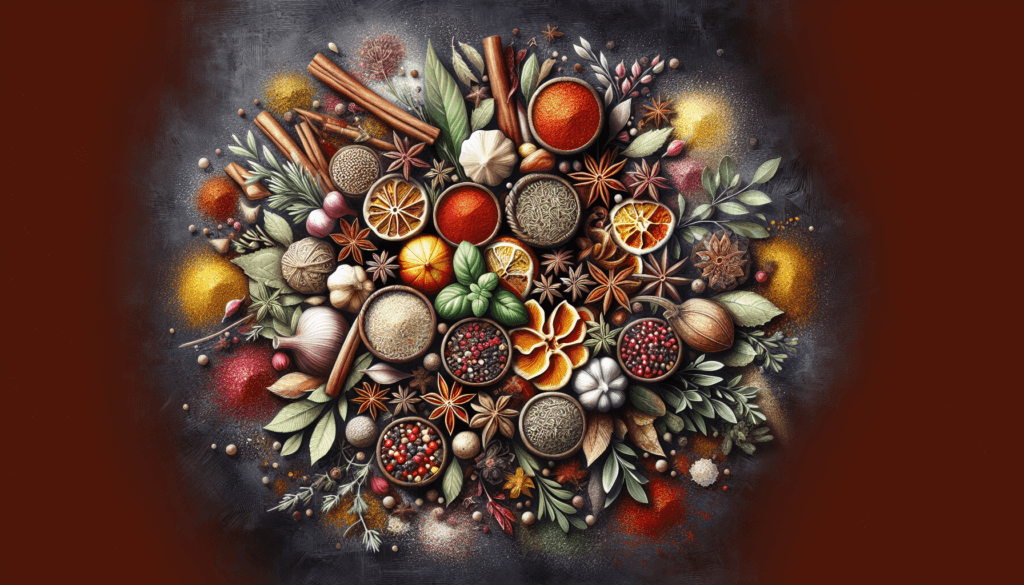
How to Choose and Buy Spices and Herbs
Choosing high-quality spices and herbs is essential to ensure that you get the best flavors in your cooking. Here are some factors to consider when buying these culinary essentials.
Whole Spices vs Ground Spices
While ground spices are more convenient, whole spices usually have a longer shelf life and maintain their flavors better. To get the freshest taste, consider buying whole spices and grinding them as needed using a mortar and pestle or a spice grinder. Ground spices, however, are perfect for recipes that require a smooth texture, such as baking.
Quality and Freshness Indicators
When purchasing spices and herbs, look for vibrant colors and strong aromas. Dull colors and a lack of fragrance can indicate inferior quality and may result in dull flavors. It’s best to buy from reputable sources that offer fresh and high-quality products. If possible, opt for organic options to minimize exposure to potential pesticides and additives.
Buying in Bulk vs Pre-Packaged
Buying in bulk can be a cost-effective option if you use certain spices and herbs frequently. However, be mindful of how often you will use them and whether you can go through the quantity before they lose their flavor and potency. It’s also essential to store them properly to ensure freshness. Pre-packaged options, on the other hand, are convenient for occasional use and offer a good variety of spices and herbs.
Measuring and Using Spices and Herbs
Using the right measurements and techniques can make a significant difference in the final taste and balance of your dishes. Here are some tips on measuring and using spices and herbs effectively.
Measuring Techniques
When measuring spices and herbs, use measuring spoons specifically designed for the purpose, as they provide accuracy. It’s best to measure the spices and herbs over a plate or a bowl to catch any excess, as they can be challenging to level off in the spoon. Additionally, lightly packing the measuring spoon for smaller quantities or leveling off the top for larger quantities can ensure consistency in your recipes.
Adjusting Seasonings
Seasoning is a crucial aspect of cooking, and adding spices and herbs in the right proportions can make or break a dish. Start with small amounts, and gradually increase as needed to achieve the desired flavor. Remember, it’s easier to add more than to remove excess seasoning, so taste and adjust as you go.
Cooking vs Finishing Touches
Different spices and herbs have varying heat resistance and flavor profiles. Some spices and herbs can be added during the cooking process to infuse their flavors into the dish, while others are best added towards the end as finishing touches to preserve their freshness and aromatic qualities. Follow the recipe instructions or experiment to find the best time to incorporate your chosen spices and herbs.
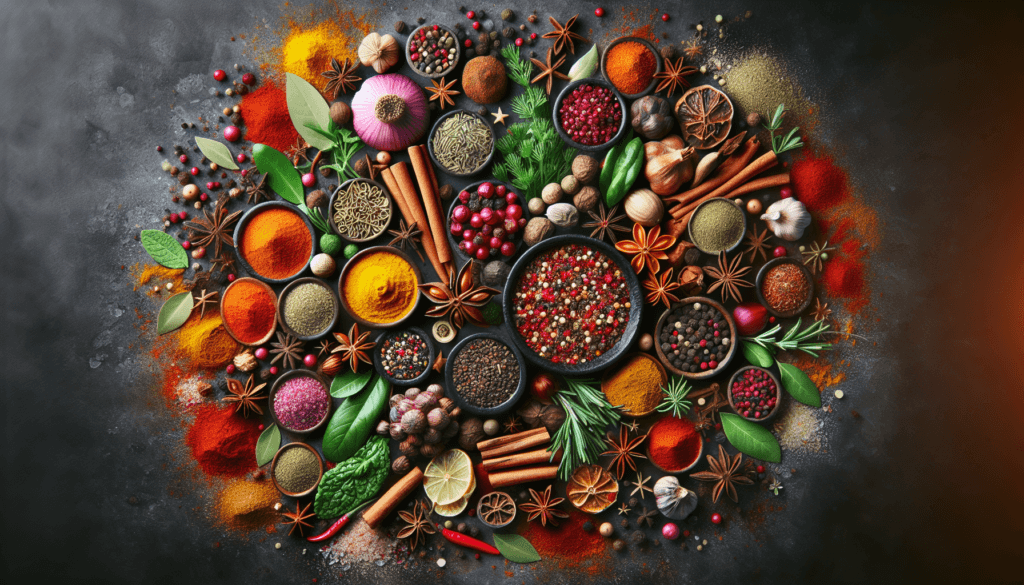
Cooking Techniques with Spices and Herbs
Knowing how to use spices and herbs in various cooking techniques will help you expand your culinary repertoire. Here are some popular techniques for cooking with spices and herbs.
Infusing
Infusing is the process of extracting flavors from spices and herbs by simmering them in liquid. This technique is commonly used for teas, soups, stews, and sauces. Simply add your chosen spices and herbs to the liquid, bring it to a gentle simmer, and let it steep for a certain amount of time. This allows the flavors to develop and meld with the other ingredients.
Dry Rubs
Dry rubs are a popular way to introduce intense flavors to meat, seafood, or even vegetables. Combining spices and herbs with salt, sugar, and other seasonings creates a dry mixture that is rubbed onto the surface of the food, allowing the flavors to penetrate and infuse during the cooking process. This technique is often used for grilling, roasting, or smoking.
Marinades
Marinades are flavorful liquids that help tenderize and flavor meat, poultry, seafood, or vegetables. By combining spices and herbs with acids like citrus juice or vinegar, along with oils and other seasonings, you can create a marinade that adds depth and complexity to your dishes. Allow the ingredients to marinate for a certain amount of time to maximize their flavors.
Seasoning Blends
Creating your own spice blends allows you to customize the flavors according to your preferences. Combining various spices and herbs in specific ratios can result in unique and complex taste profiles. Experiment with different blends for specific cuisines or keep a versatile all-purpose blend on hand for everyday cooking.
Final Tips and Reminders
As you journey into the world of spices and herbs, here are some final tips and reminders to help you along the way.
Start with Small Quantities
When trying out new spices and herbs, start with small quantities to avoid overpowering your dish. You can always add more if needed, but it’s challenging to tone down strong flavors once they have been added.
Taste and Adjust
Remember to taste your dishes as you go and adjust the seasonings accordingly. Developing your palate and understanding the balance of flavors will take time, so trust your taste buds and make tweaks as necessary.
Grow Your Herbs
Consider growing your own herbs to have a fresh supply of flavors right at your fingertips. Herbs like basil, thyme, and rosemary are relatively easy to grow and can be kept indoors or in a backyard garden. By growing your own herbs, you’ll always have access to vibrant and flavorful ingredients.
Now that you’ve gained a comprehensive understanding of spices and herbs, it’s time to embark on your culinary adventures. Explore different flavor combinations, experiment with various techniques, and let your creativity shine in the kitchen. Remember to have fun and enjoy the rich tapestry of flavors that spices and herbs have to offer. Happy cooking!
